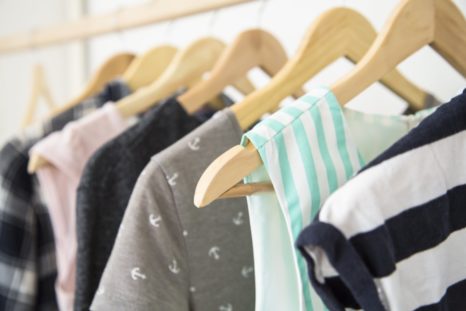High Heels and Other Hidden Health Risks in Your Wardrobe
Simon Moyes discusses the staple items in a woman's wardrobe that can cause damaging health problems.
High heels, flip flops, heavy handbags and statement necklaces can be staple items in a woman’s stylish wardrobe, but they are causing damaging health problems in the pursuit of being fashionable.
Here’s my advice for avoiding potential health risks caused by accessories:

High heels
Repeatedly wearing high heels can lead to a painful condition called Achilles tendonitis. The Achilles tendon is the long thin tendon that runs from the base of the calf muscles down to the heel bone. Wearing high heeled shoes can lead to chronic shortening of the calf muscles and extremely painful inflammation of the Achilles tendon.
Another consequence of heeled shoes is the increased risk of developing bunions and calluses. This is normally associated with the front of the foot being pushed into a pointed shoe and crowding the toes.
The good news is that as long as high heels are only worn occasionally, you should not necessarily damage your foot. While you are more likely to develop bunions if you have a family history and are genetically predisposed to the condition, wearing high heels may accelerate bunion development.
The solution is to avoid wearing high heels for extended periods of time and choose lower, wider shoes the rest of the time. If the problems are long standing, then there is always a relatively straightforward surgical solution.
Flip flops
Flip flops can lead to plantar fasciitis. This is a very painful condition which produces pain in the sole of the foot and in the heel – mainly on the inside of the foot. The plantar fascia is a thick sheet of tissue that runs from the heel to the ball of the foot, supporting the deep layers of muscles and tendons in the foot.
The lack of arch support and cushioning, combined with the way you walk in flip flops can predispose you to this condition.
The condition is normally diagnosed clinically by the position of the pain, local tenderness over the plantar fascia, medial bundle of the plantar fascia and is confirmed with an ultrasound or MRI scan.
Treatment of the condition is usually straightforward with a physiotherapy programme working on stretching up the plantar fascia and calf muscles and returning to more cushioned, supportive footwear and avoidance of impact activities.
If the symptoms fail to respond to these simple stretching measures, alteration of footwear and activities, then ultrasound guided steroid injections can be administered.
Heavy handbags
Women’s handbags can be surprisingly heavy. The way they are carried over the shoulder can also predispose to the development of chronic shoulder pain – namely inflammation and impingement of the rotator cuff.
You may end up with pain at night and it may cause sleep disturbance, as well as difficulty using your arm at or around shoulder height. There may also be the development of ‘crepitus’ – crunching or grinding noises in your shoulder girdle as you lift your arm.
Referral to an appropriate specialist is recommended. Clinic diagnosis is made, and the condition is confirmed with imaging, including ultrasound and MRI scan. Fortunately, in around 80 per cent of cases, the condition responds well to a combination of physiotherapy, postural instruction and steroid injections into the subacromial space.
To help avoid developing the condition with a heavy bag, try to unload heavier objects from the bag and change shoulders.
Heavy necklaces
Did you know that wearing heavy necklaces can cause injuries?
A weighty necklace, combined with the use of a heavy handbags, can produce further protraction of the shoulder, curvature in the upper dorsal or thoracic spine and hyperextension of the lower cervical spine tending to have the head thrust forwards.
This can place a lot of strain on the base of the neck, causing lower cervical pain. These two issues combined, with classic poor posture in a desk-based work environment, produces a range of conditions that will cause pain in the base of the neck, upper dorsal spine, pain and impingement in both shoulders. All these things produce impingement in the shoulders.
Physiotherapists, personal trainers and orthopaedic surgeons are seeing more and more patients with pain caused by these fashion fads. It is also very important to try and improve one’s posture and biomechanics by straightening up the cervical and thoracic spine. Stretching out your chest muscles, work biomechanics with workstation assessments, postural instructions and regular stretching will all help to relieve pain and symptoms.
Simon Moyes is an internationally renowned orthopaedic surgeon and leader in the field of arthroscopic (keyhole) surgery. His Capital Orthopaedics team works from The Cromwell Hospital in London, with its state-of-the-art diagnostic and surgical equipment, and top sports medicine professionals.

